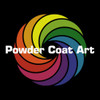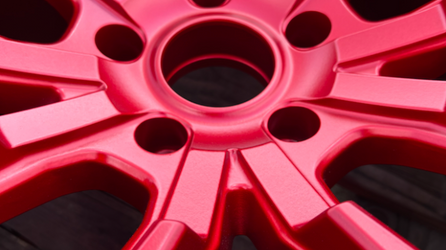Pros and Cons of Powder Coating
1st May 2023

Pros and Cons of Powder Coating
Powder coating is a method rapidly increasing in popularity. This method applies a durable and protective finish to metal surfaces. It involves the application of a dry powder that is electrostatically charged and then sprayed onto the surface. The powder adheres to the metal, and then the coated surface is heated, causing the powder to melt and fuse into a smooth, even covering. Powder coating can be applied to various surfaces, but some textures are better suited to this method than others. Let’s explore the six best surfaces to powder coat — and three you should never touch!
6 Best Powder Coating Surfaces
Steel
Steel is one of the most common surfaces that is powder coated. It is durable, strong, and corrosion-resistant, making it an ideal material for various applications. Powder coating can be applied to various shapes and sizes of steel surfaces, including pipes, sheet metal, and wire.
Aluminum
Aluminum is a lightweight metal that is also resistant to corrosion. Powder coating can provide an additional layer of protection to aluminum surfaces, making them even more resistant to wear and tear. Aluminum surfaces that are often powder-coated include wheels, frames, and engine parts.
Iron
Iron surfaces are also suitable for powder coating. Iron is a strong, solid and durable material that can withstand a lot of wear and tear. Powder coating can provide additional protection against rust and other forms of corrosion. Iron surfaces that are often powder-coated include fences, gates, and decorative metalwork.
Brass
Brass is a metal alloy that is often used in decorative applications. Powder coating can provide a protective layer to brass surfaces, preventing them from tarnishing or rusting. Powder-coated brass surfaces are often used in decorative fixtures and hardware.
Copper
Copper is another metal that is often used in decorative applications. Powder-coated copper surfaces are often used in architectural and decorative elements. Powder coating can protect copper surfaces, preventing them from tarnishing or rusting over time.
Galvanized Steel
Galvanized steel is a steel surface treated with a zinc layer to protect against corrosion. Powder coating can be applied over the galvanized surface, providing additional protection. Powder-coated galvanized steel surfaces, such as fencing and signage, are often used in outdoor applications.
3 Surfaces to Never Powder Coat
While powder coating is a popular and effective method for protecting and enhancing metal surfaces, some surfaces should never be powder coated. These surfaces may not adhere well to the powder coating or be damaged during the powder coating process. This article will explore the three surfaces to never powder coat.
Wood
Powder coating is designed for metal surfaces and should never be applied to wood surfaces. Wood is a porous material that can absorb moisture, which can cause the powder coating to bubble and peel. The heat required for the powder coating process can also cause the wood to warp, crack, or burn. If you want to add a fun pop of color to a wooden surface, other coating options are available, such as paint or stain.
Plastic
Powder coating should also never be applied to plastic surfaces. Plastic cannot withstand the high temperatures required for the powder coating process, and it can melt or warp when exposed to heat. Additionally, plastic surfaces may not adhere well to the powder coating, which can cause the coating to peel or flake off. If you need to add color to a plastic surface, consider using a vinyl wrap or paint specifically designed for plastic.
Glass
Glass is another surface that should never be powder coated. The high temperatures required for the powder coating process can cause the glass to shatter or crack. Additionally, the powder coating may not adhere well to the glass surface, which can cause the coating to peel or flake off. If you want to add a unique flare to a glass surface, consider using glass paint or film.
Why Choose Powder Coat Art?
Powder coating is a versatile and durable method of finishing metal surfaces. While it can be applied to a wide range of surfaces, some are better suited to this method than others. Steel, aluminum, iron, brass, copper, and galvanized steel are all excellent surfaces for powder coating, providing additional protection and durability to various applications.
At Powder Coat Art, we offer professional powder coating services for various surfaces and applications. Contact us today to learn more about our powder coating services and how we can help you protect and enhance your metal surfaces.

